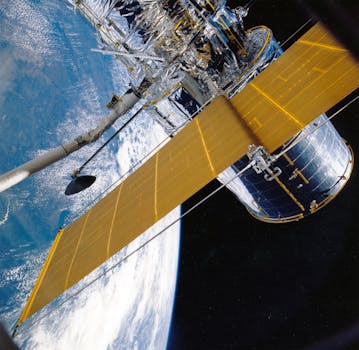
The Future of Connectivity: Latest Breakthroughs in Satellite Telecommunications
The Future of Connectivity: Latest Breakthroughs in Satellite Telecommunications are transforming the way we communicate and access information. With the increasing demand for global connectivity, satellite telecommunications have become a vital component of modern communication systems. Recent breakthroughs in satellite technology have paved the way for faster, more reliable, and more accessible connectivity, bridging the gap between urban and rural areas, and enabling global communication like never before.
Advances in Satellite Technology
One of the significant advances in satellite technology is the development of high-throughput satellites (HTS). These satellites offer higher bandwidth and faster data transfer rates, making them ideal for applications such as broadband internet, video streaming, and mobile connectivity. HTS satellites use multiple spot beams to reuse frequencies, increasing the overall capacity of the satellite and reducing interference. This technology has enabled satellite operators to provide higher-speed internet services, making it possible for people in remote areas to access the internet and stay connected.
Low Earth Orbit (LEO) Satellites
Another breakthrough in satellite telecommunications is the launch of Low Earth Orbit (LEO) satellites. LEO satellites orbit the Earth at an altitude of around 1,200 kilometers, which is much lower than traditional geostationary satellites. This lower altitude reduces latency and increases the speed of data transfer, making LEO satellites ideal for real-time applications such as video conferencing, online gaming, and virtual reality. Companies like SpaceX and OneWeb are launching constellations of LEO satellites to provide global internet coverage and enable a new generation of satellite-based services.
5G and Satellite Telecommunications
The integration of 5G technology with satellite telecommunications is another significant development in the field. 5G networks require a large number of small cells to provide high-speed coverage, which can be challenging in rural and remote areas. Satellite telecommunications can fill this gap by providing backhaul connectivity to these small cells, enabling 5G services in areas where traditional fiber-optic connectivity is not available. This integration of 5G and satellite telecommunications will enable a wide range of new use cases, including IoT, smart cities, and mission-critical communications.
Challenges and Opportunities
While the latest breakthroughs in satellite telecommunications offer many opportunities, there are also challenges that need to be addressed. One of the significant challenges is the issue of space debris, which can pose a risk to operational satellites and increase the cost of satellite launches. Another challenge is the need for international cooperation and regulation to ensure that the benefits of satellite telecommunications are shared equitably among all nations. Despite these challenges, the future of satellite telecommunications looks promising, with many opportunities for growth, innovation, and investment.




